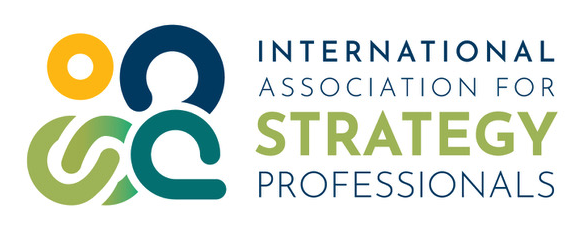By Susan Radwan
Strong and intentional governance is critical for any organization to maintain high performance and succeed in its strategic endeavors. Indeed, governance is one of five key strategy activities defined in the IASP Body of Knowledge 3.0 (Hadaya et al., 2023). Unfortunately, few organizations are attentive to strategy governance and instead focus on formulation, implementation and execution.
Those that do practice governance generally address the C-Suite, thereby deploying a model that is too shallow and simplistic, which is one reason that more than 50% of strategic efforts fall short of fulfilling the expected benefits and ultimately fail (Ewenstein et al., 2015). This article defines and describes strategy governance and presents five recommendations organizations can deploy to reap the maximum benefit of holistic governance.
Defining Strategy Governance
At its broadest interpretation, governance is about the structures, systems, and practices an organization uses to make decisions, identify who has the delegated decision-making authority, what level of decisions can be made by whom, and who is accountable to whom and for what they are accountable (Hadaya et al., 2023).
However, governance goes far beyond these forms of structure, system, and practice.
The actual function of governance is to see that the organization remains unimpeded in achieving its strategy and fulfilling its mission (Carver, 2006).
In addition to overseeing key indicators, decisions, and processes, governance also includes designing and aligning the playing field to pursue intended results. Governance decisions focus on optimizing each element of the process to ensure that the process, and ultimately the strategy, succeeds. Strategy governance defines the flow of accountability and delegated authority, which typically flows from the top of the organization down, while accountability flows up to the primary authority.
Many incorrectly believe that governance is solely a function of the board of directors. The reality is that governance is a function and activity of every level of the organization, simply adjusted for the level of the work. For example, the board and C-suite focus on the entire organization. A business unit or department leader sees that the unit or department aligns with and performs the overall strategy to avoid deviating from the goal.
Governance is often misconstrued with management, but the two functions are very different. The primary concern of governance is on the whole organization and the synthesis of the whole to create strategic positioning in the marketplace. In other words, governance focuses on optimizing the parts in order to maximize the whole. Governance is working on the organization (or business unit or project) and checking whether the deliverables produced are serving the entity’s strategic positioning. One cannot see the whole without detaching from the day-to-day activities. On the other hand, management focuses on leading, directing, organizing, and controlling individual functions and projects within the departments, business units and siloed functions. In a fragmented fashion, management often maximizes the parts and, in doing so, creates competition that eventually diminishes the whole.
Considering that the strategy profession views its product along a continuum of activities, we must consider a more holistic approach to governing strategy. Extending and contextualizing the concepts of governance, good and intentional strategy governance requires design and follow-through implementation of the decision-making process to reap maximum benefit. More precisely, strategy governance entails:
• Establishing the rules, policies, requirements, standards, accountabilities, and controls related to all strategy activities.
• Defining who will be involved in making and enforcing those rules.
• Assessing the strategy management processes to ensure value creation, fiscal responsibility, and clear and coherent accountability.
Five Recommendations to Achieve Holistic Strategy Governance
One approach to achieve maximum results is to apply a systems thinking perspective. Systems thinking leads to creating a holistic approach in designing and governing the strategy playing
field to achieve intended results.
The metaphor of a helicopter illustrates the concept well. It allows one to see the whole picture, including each element’s strategic positioning and interdependence and the potential for unintended consequences that can derail strategy execution progress. Systems thinking is core to correctly positioning the strategy and associated decisions within, across and throughout the organization. Anchored on a systems thinking perspective, five critical recommendations guide holistic strategy governance to enable the organization to reap maximum strategic benefits.
Recommendation #1:
Design, Implement, and Use a Holistic Strategy Governance Operating Model
With systems thinking, there is a recognition that all activities, functions, and structures within an organization are interdependent. To achieve holistic systems thinking, everything needs to be done from the perspective of the entire organization. This includes evaluating the impact of the strategy, the interdependence of the activities, functions, and organizational structures, and the impact on the people engaging in the work.
Hence, a holistic strategy governance operating model (HSGOM) must be designed, implemented, and used
to effectively govern the strategy.
The HSGOM should be anchored on four pillars (Hadaya, 2021):
1. Policies that document the direction and parameters for action.
2. Clear delineation of roles, delegated authority, the limits of unilateral authority and accountability structure.
3. Essential committees that champion functional alignment with the strategy.
4. Long-term financial plans and rolling forecasts that define the expected strategy investments and become a benchmark for assessing performance.
For maximum effectiveness, the HSGOM should:
• Integrate input from other disciplines. Indeed, in addition to having input from operations, it is necessary to obtain input from three key disciplines. Data governance ensures data quality, requirements, controls, and appropriate audit cycles. Risk oversight enables the development of a profile, framework and policies that define risk appetite and assurance that strategy activities fall within strategy-related boundaries. Finally, project management oversight helps clarify the efficient use of resources by aligning project decision-making to the strategy.
• Ensure effective feedback loops to not only monitor performance data but to keep a pulse on employee morale. Because people support what they help create (Haines, 2004), employees need a way to make recommendations or identify concerns that impact the achievement of the strategy.
Recommendation #2:
Establish a Cross-functional Team to Lead the Effort
Given the organizational complexity of an HSGOM, a cross-functional team must be created to steward the strategy and answer the big questions regarding transformational alignment to achieve the strategy. This team should be responsible for designing, implementing, and overseeing the use of the HSGOM.
The key to this team’s success is giving voice to the diverse perspectives of the group and sharing insights to assess the design, the alignment of decisions, and the efficacy of processes in play. The team is responsible for deciding the key characteristics of the HSGOM and overseeing its implementation as well as overseeing its use to assess its effectiveness and make necessary adjustments when necessary. Ultimately, this team is accountable for effective governance, ensuring that each unit of the organization generates the outcomes and key results (OKRs) that drive the intended success of the strategy.
For maximum effectiveness, this team should comprise 7-12 members, including the following individuals with the responsibilities identified in Table 1.
Recommendation #3:
Everyone Must Work Together to Achieve Optimal Results
The cross-functional team cannot, on its own, enable an organization to govern its strategy in a holistic fashion. After the cross-functional leadership team designs the HSGOM, every member of the organization must contribute to the implementation and use of the HSGOM. The implementation of the HSGOM requires the participation of finance, data governance, risk assessment, project management governance, business and product development, and human resource teams to work closely with specialists to ensure efficient systems are built to deliver on the strategy. In turn, the use of the HSGOM requires the participation of each person in the organization to know and understand projections for performance and be accountable for their own contributions to achieve the results expected. At every level, the strategy, the policies guiding the strategy, and the accountability to that strategy must be understood to gain commitment to delivering results.
Recommendation #4:
Continuously Improve Processes
As strategy activities are executed, the organization needs to assess both the functioning and outputs of the HSGOM regularly and formally, including decision-making processes and the strategy governance results. The results of these assessments are likely to lead to improvements in the design of the HSGOM that will then need to be implemented and used. Thus begins the wheel of holistic strategy governance to strive but never achieve perfection.
Recommendation #5:
Communicate with Transparency
Using input from the cross-functional team leading the HSGOM effort, the communications function must inform all stakeholders about the design, implementation, and use of the HSGOM to foster buy-in. Management and employees who contribute to the process need to understand why and how their efforts can move the strategy forward. When people see progress occurring, it creates momentum toward the desired future. During the design phase, managers at all levels must be informed about the framework of the HSGOM, the direction of the strategy itself and the map of delegated decision-making authority and policies. During the implementation of the HSGOM, people need to be continuously reminded about the purpose and intent of the change, to be realized by communicating the targeted process changes and the necessary timing. Finally, at intervals throughout the process of execution, employees should be thanked for their efforts as well as be informed about results and what improvements are still needed to achieve the next desired result.
A transparent communication plan should:
• Focus on informing and obtaining buy-in for the design, implementation, and execution of HSGOM and the relevant strategies results.
• Broadcast decisions, policy changes, and accomplishments.
• Acclimate the workforce to invest in achieving the strategy.
• Share how the feedback loops are impacting strategic efforts.
Conclusion
The structure and processes needed to execute a complex organization’s strategy successfully must be holistic and intentional in design, implementation, use, and oversight. This article has presented an approach toward defining a holistic strategy governance model which is a necessary function to deliver strategic results. While designing an operating model may seem like an expensive and time-consuming proposition, failure of the strategy is even more costly.
References
- Carver, J. (2006) Boards That Make a Difference. Jossey-Bass.
- Ewenstein, B., Smith, W., and Sologar, A. (2015) Changing Change Management. McKinsey & Company.
- Hadaya, P. (2021) Govern You rStrategy to Success. ASP 2021 Annual Conference.
- Hadaya, P., Stockmal, J. et al. (2023) ISAPBOK 3.0: Guide to Strategy Management Body of Knowledge. International Association for Strategy Professionals.
- Haines, S., Aller-Stead, G., and McKinley, J. (2004) Enterprise-Wide Change: Superior Results Through Systems Thinking. Pfeiffer.
About the Author
Susan Radwan, SMP, is a 25-year veteran of governance and leadership consulting. In that role, she coaches boards of directors in governance and facilitates strategic processes, primarily in the not-for-profit world. In addition to Strategic Management Professional (SMP), she holds many credentials, including a Master’s Degree in Education, Governance Systems Professional (GSP)-Fellow and Certified Association Executive. She co-authored the book, Governing by Principles and served as Executive Editor for Professional Practices in Association Management, 3rd and 4th editions, published by the American Society of Association Executives (ASAE). Radwan is currently completing her two-year term as President of IASP. Prior to her election as an IASP officer, Radwan served as the first Certification Commission Chair for IASP.







